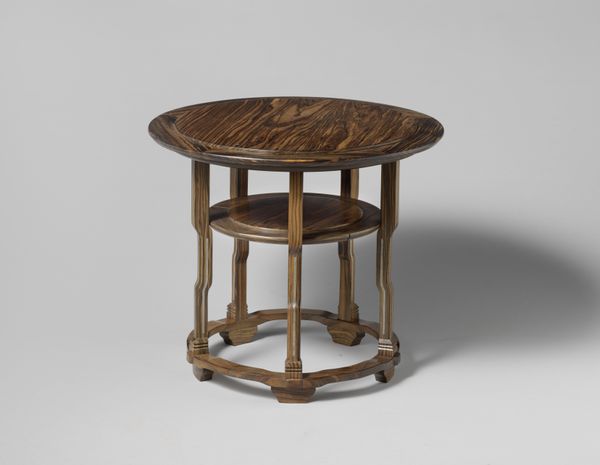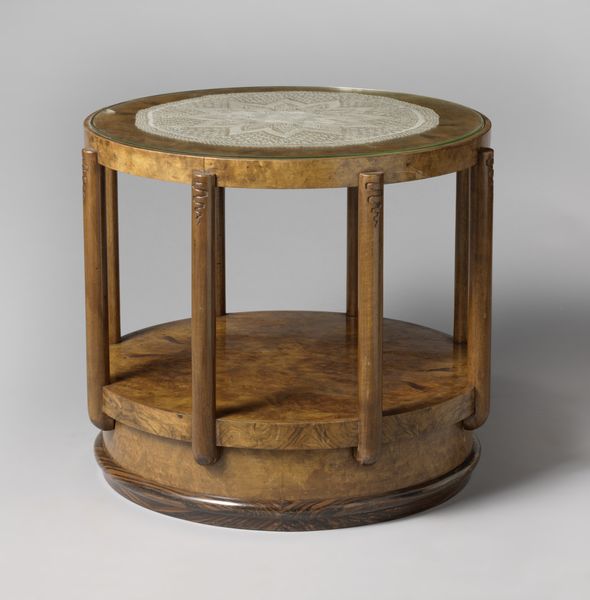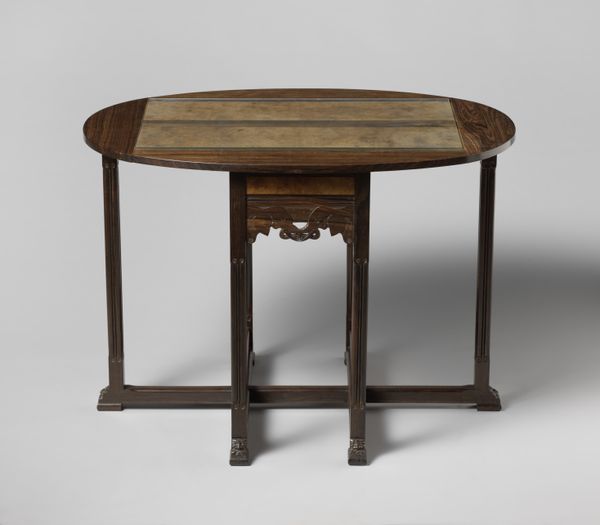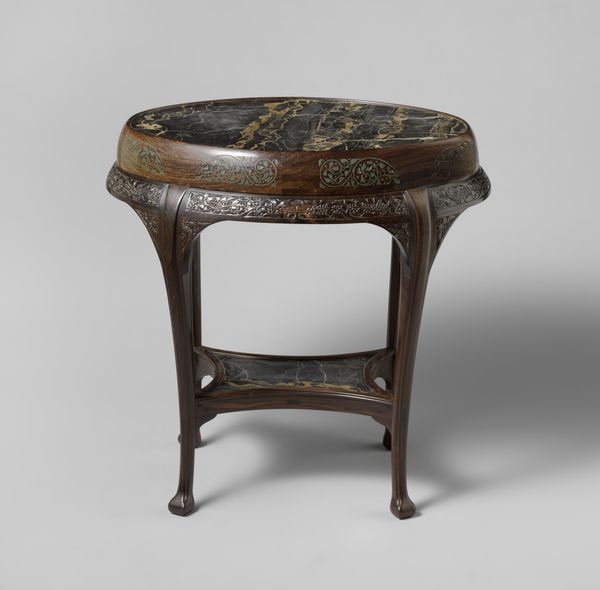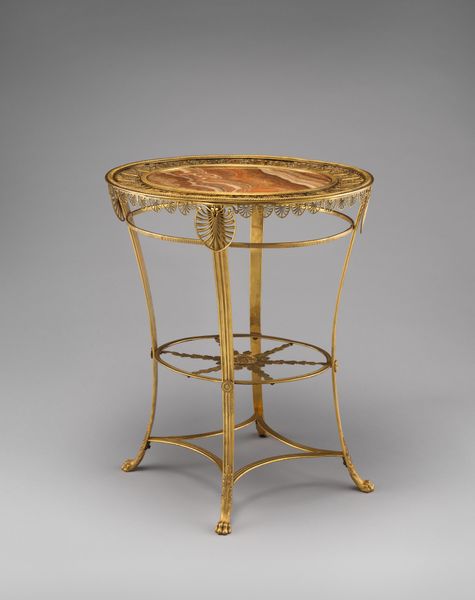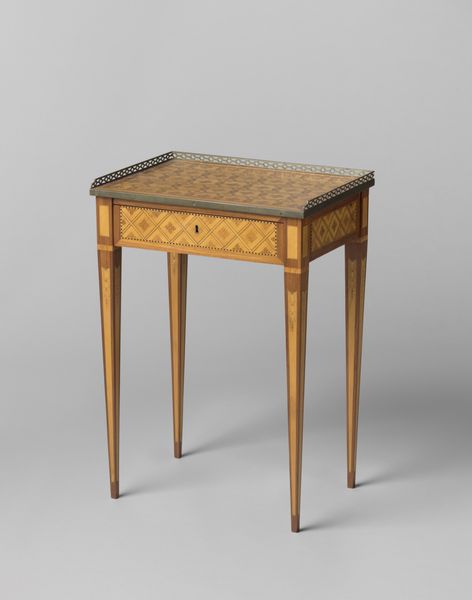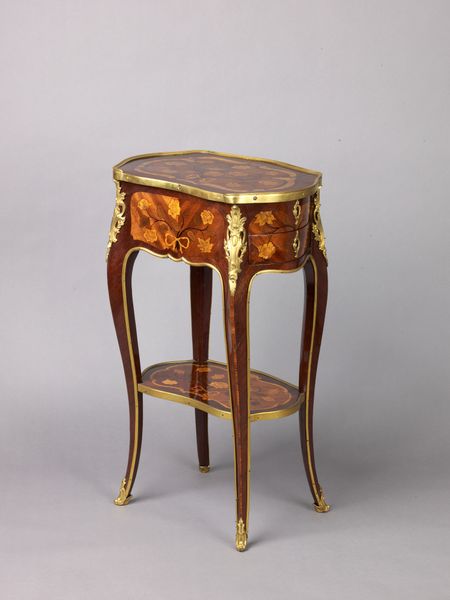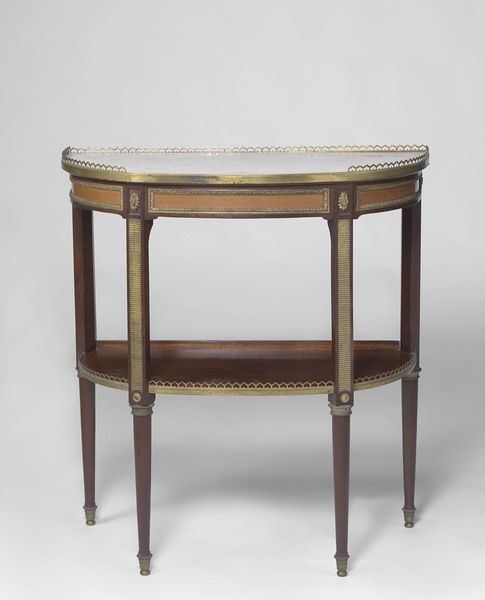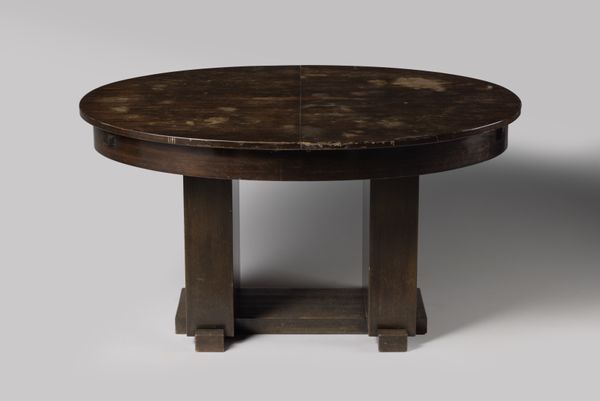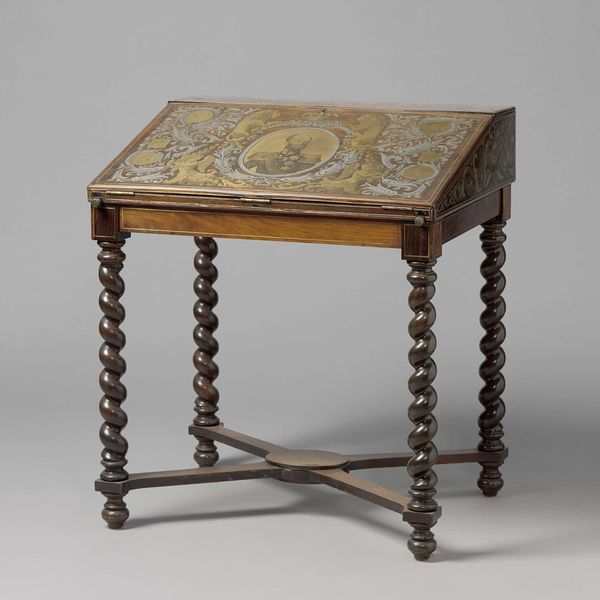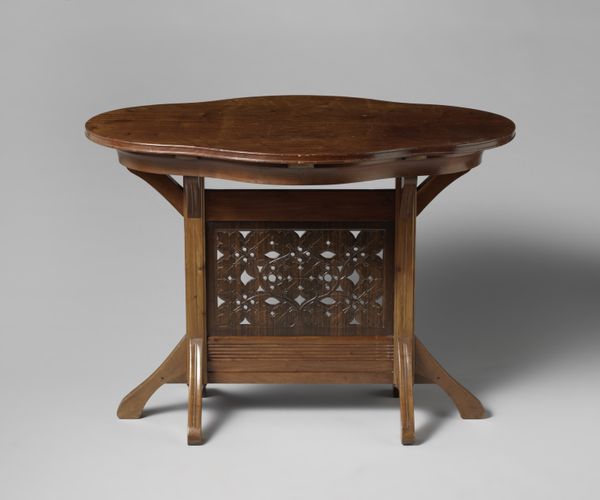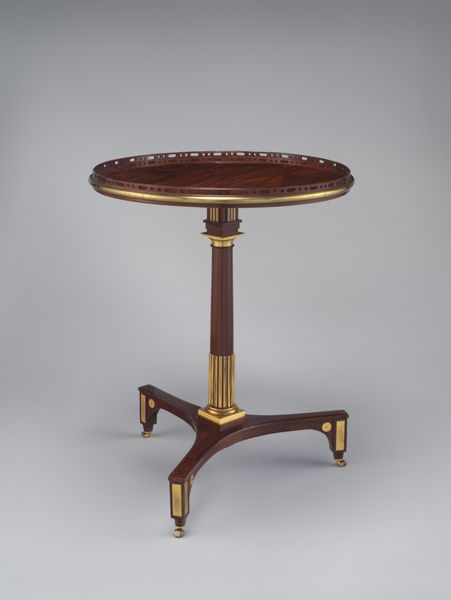
Tafel van coromandelhout en ebbenhout, ingelegd met tinnen biezen 1920
0:00
0:00
carving, wood
#
art-nouveau
#
carving
#
geometric
#
wood
#
decorative-art
Dimensions: height 50.9 cm, diameter 48.4 cm, weight 11 kg
Copyright: Rijks Museum: Open Domain
Editor: This is "Tafel van coromandelhout en ebbenhout, ingelegd met tinnen biezen"– a table made around 1920 by Carel Adolph Lion Cachet. The coromandel and ebony woods, inlaid with pewter, give it such an exquisite and refined feel, even though it's ostensibly just…a table. How do you interpret the making of this table? Curator: Well, immediately, I’m drawn to the inherent tension in its production. Look at the use of coromandel and ebony—rare, imported hardwoods associated with luxury and colonial trade— juxtaposed with the pewter inlays, a more commonplace material suggesting local craft. This table embodies both high-end artistry and accessible making, doesn't it? Editor: Definitely! So you're saying that its value resides less in its aesthetic appeal, but in how it mediates socio-economic boundaries via material assembly? Curator: Precisely. Cachet here actively engages with material hierarchy, suggesting that value isn't solely inherent to preciousness. By emphasizing labor and process – consider the carving and inlay – the artwork subtly democratizes craft. The geometric inlays add another layer, recalling industrial production and efficiency. Does this perhaps indicate that Cachet considers making accessible? Editor: I hadn't thought about the labor aspect so explicitly before. Now I wonder if the pewter inlays were used partly because they were easier to source or work with compared to more precious metals at the time? Curator: That’s a very good point. Accessibility of material could have driven it too. This table challenges our preconceptions about high art versus craft, prestige, and accessibility, by encouraging a more nuanced appreciation for materiality and means of making, right? Editor: Absolutely. I now appreciate that this piece offers insight not only into form and style, but into the labor and materials it comprises, questioning those assumptions about value itself. Curator: It's amazing to realize this simple table carries many stories about consumption and means of production, isn't it?
Comments
No comments
Be the first to comment and join the conversation on the ultimate creative platform.
